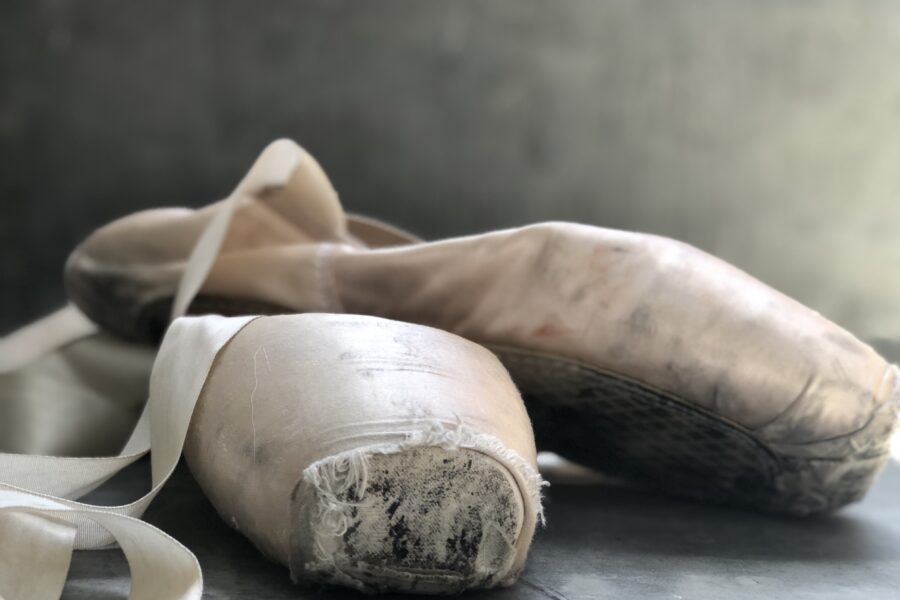I fell in love with Wendy Whalen at the end of her 30-year career as a principal dancer at New York City Ballet. Even though I lived in Manhattan while she danced with the company, somehow I never knew of her celebrity. Instead, I discovered her by sheer luck, years and years later, while madly chasing down an orchestral piece by Max Richter called On The Nature of Daylight. If you haven’t heard it, please stop reading this and take a listen. Because it will move you. Deeply. It certainly did me, to such an extent that I could not get the melody out of my head. Which is what caused me to turn to Google and try to find the composer. Which led me to a remix of Richter’s piece layering in Dina Washington vocals from the 1960s tune, The Bitter Earth. Which finally brought me to the Christopher Wheeldon ballet of the same name and a YouTube video of Wendy Whalen and Tyler Angle in rehearsal for its premiere. A bit of a windy road, but I found her.
The truth is I have always loved ballet. My middle sister and her husband introduced me to the art form when I was probably around 10 years old. They would take my younger brother and me to the O’Keefe Center in Toronto to see classics like Swan Lake and Sleeping Beauty. We’d all get dressed up and go downtown to the Old Spaghetti Factory for dinner and then walk over to the show. What was so magical about those outings was that I knew I was learning about the bigger world. Both from the spectacle of watching the ballet, and from the dance itself. I couldn’t get over the precision and strength of the dancers, the music, the costumes. My family still jokes that I wouldn’t put down those tiny binoculars because I was so fascinated by the male dancers in their tights (and there probably is some truth to the tale). But I think the real reason I held on to them was that I wanted to see it all up close; I wanted to zoom in on every detail of the exquisite story being told.
When I watched Whalen dance for the first time, I felt that awe again. Every turn and gesture and lift, every articulation she made seemed to hang in the air, seamlessly driving the next moment and the next. In an interview I found, she revealed that the last piece of technique a ballet dancer learns is how to move their hands. Which made complete sense to me given that a feeling starts from deep inside of us and works its way outward to the world. Of course the hands are last! They are the letting go point; the sending out point. Which might be what amazed me the most after watching a mere two minutes of rehearsal: her ability to surrender all that she was feeling to the audience. And yet there’s another reason why I fell in love with her. One tiny detail that I need to share. At the time, Whalen was 46 years old. That’s right. Forty-six years old and still a principal at NYCB.
It took me a while but, eventually, I stopped sending people links about her. Eventually, my headiness over Whalen wore off. That is until just the other night when, while noodling around on Netflix for something to watch, I came across a documentary about her called Restless Creature. The film picks-up on her life just after I discovered her, at age 46, as she’s about to undergo surgery for a hip injury that has pretty much stopped her from dancing. Up until this point, she had navigated decades of dance without interruption. Now she can’t get across the floor without experiencing extraordinary pain. What’s interesting is that prior to the injury flaring up, Whalen says she was asked/encouraged/nudged by the NYCB Director to step back from performing in The Nutcracker. Which, I guess, in the dance world is the standard. The suggestion was a crushing blow for her; a sign that a corner had been turned. An event, she believes, precipitated her body starting to fail and her suddenly questioning whether or not her career was over. Throughout the film we watch her rehabilitate, struggle with her aging, return to classes and rehearsals, realize the new limitations of her body, and finally make the decision to retire, on her terms, with one last original performance created by choreographers Jerome Robbins and Christopher Wheeldon, her longtime collaborators. When the curtain finally falls, she is 47 years old and has completed three decades of dance for the company.
Of course, she doesn’t stop dancing; she merely stops dancing ballet for NYCB. In fact, in the closing credits, the filmmakers cut in Instagram posts of her touring the country with a new production. Which may have been a big FU to the institution or a statement to the viewer that the institution would not be bookending her career. Either way, she goes on to continue performing and collaborating with renowned choreographers and dancers. But here’s what’s most inspiring, and the real reason for this missive. A few months before Whalen turned 50, sometime last year, she decided to give all of her ballet leotards to her students. She called it an experiment and wanted to know if giving away her old uniform and dressing differently would facilitate her letting go of old muscle patterns. And guess what? It did.
Dance Magazine quotes Whalen as saying, “The minute I got myself out of leotards, my body opened up: I didn’t feel so strict and tight and bound . . . I never expected you could change so much from the outside-in . . . I’m thinking and doing things I never would have imagined as a ballet dancer.”
By letting go of what defined her and served her so well for so long, Whalen paved the way for her reinvention. And to me, that’s the true meaning of the word. Not creating something from scratch or making something entirely new (because that happens in another lifetime). But instead, rebuilding from what you have by losing the ingrained responses, the safety nets, the rules and beliefs, the fixed mindset that tries to convince us we are only one thing.
That’s the beauty of middle age. That’s the challenge of middle age.







